Recently I’ve become rather obsessed with the Tour de France. Having never watched a bike race previously, I now find myself glued to Eurosport for upwards of five hours a day. There are a number of factors contributing to this shift on my part: an increased familiarity with the landscape and culture of the host nation, some covid-induced couch time, and a newfound respect for the insane feats of athleticism on display day after day.
Aware that this is a cross-country skiing publication, I should point out that this famous bike race is not totally without connection to our sport of focus here at FasterSkier. The event that ski fans might refer to as “the Tour” (the Tour de Ski) is the result of an idea allegedly generated in a Norwegian sauna by then International Ski Federation (FIS) cross-country race director, Jürg Capol and ski legend, Vegard Ulvang. Following the germination of this idea, Capol visited the Tour de France in 2006 before the first edition of the Tour de Ski. According to an FIS press release, “the goal of the trip was to gain valuable insight into the logistics, marketing implementation, television and internet production and accreditation services that are part of the organization of any world-class sports event consisting of multiple stages.”
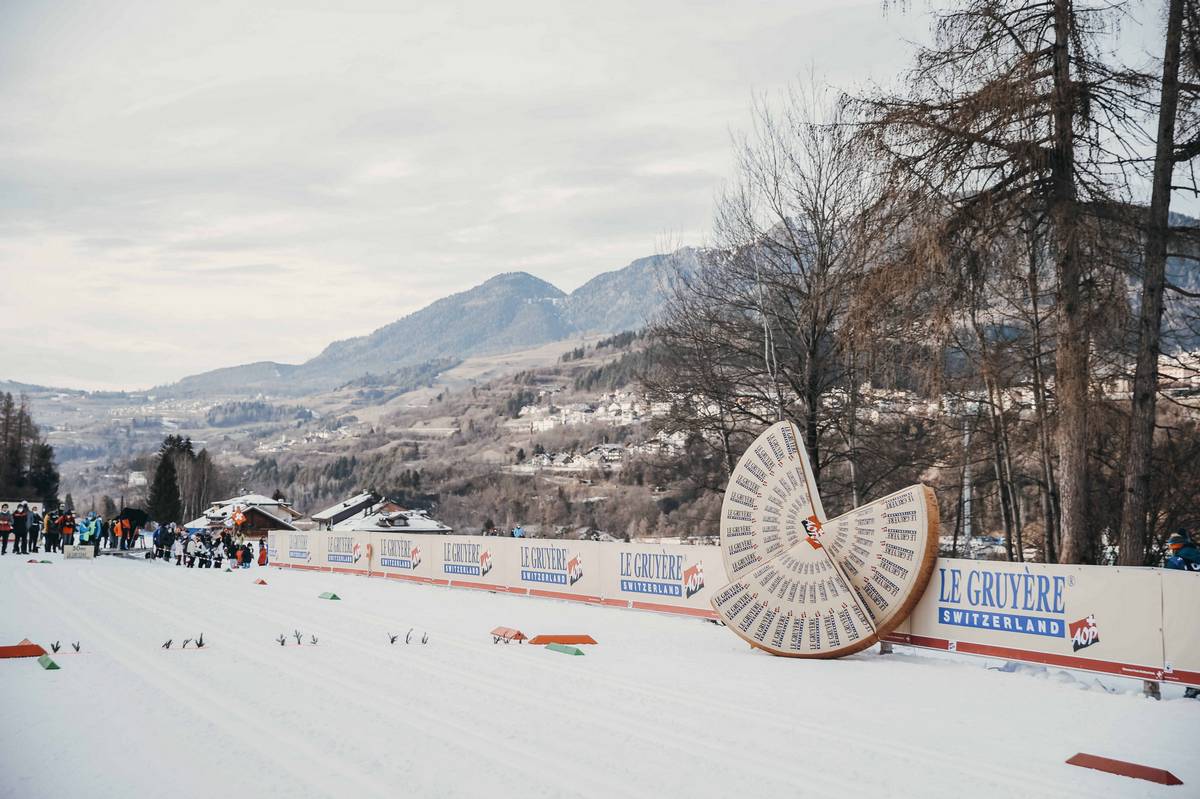
After his visit Capol remarked, “the logistical accomplishments of the local organizing committees at the Tour de France are truly remarkable… I am convinced that the organizers of the FIS World Cup Cross-Country could all learn a lot by reaching out to other sports and events in the future.”
The logistics are just one of the many impressive things about the Tour de France, which saw its 109th edition start in Copenhagen on the first of the month. The spectators are another. Without having witnessed either race in person, I imagine the atmosphere at the Tour de France being somewhat akin to the Holmenkollen World Cup, only lasting three weeks as opposed to two days.
To gain some insight on the roadside spectating experience, I reached out to a few people who made it there in person.
Anna Gibson grew up watching the Tour de France annually with her family from their home in Wyoming. Gibson said, “even on TV, I could tell how physically and emotionally intense the Tour was. It has always impressed me. But getting to watch the Tour in person made me realize that the race is even more athletically impressive than I ever thought.”
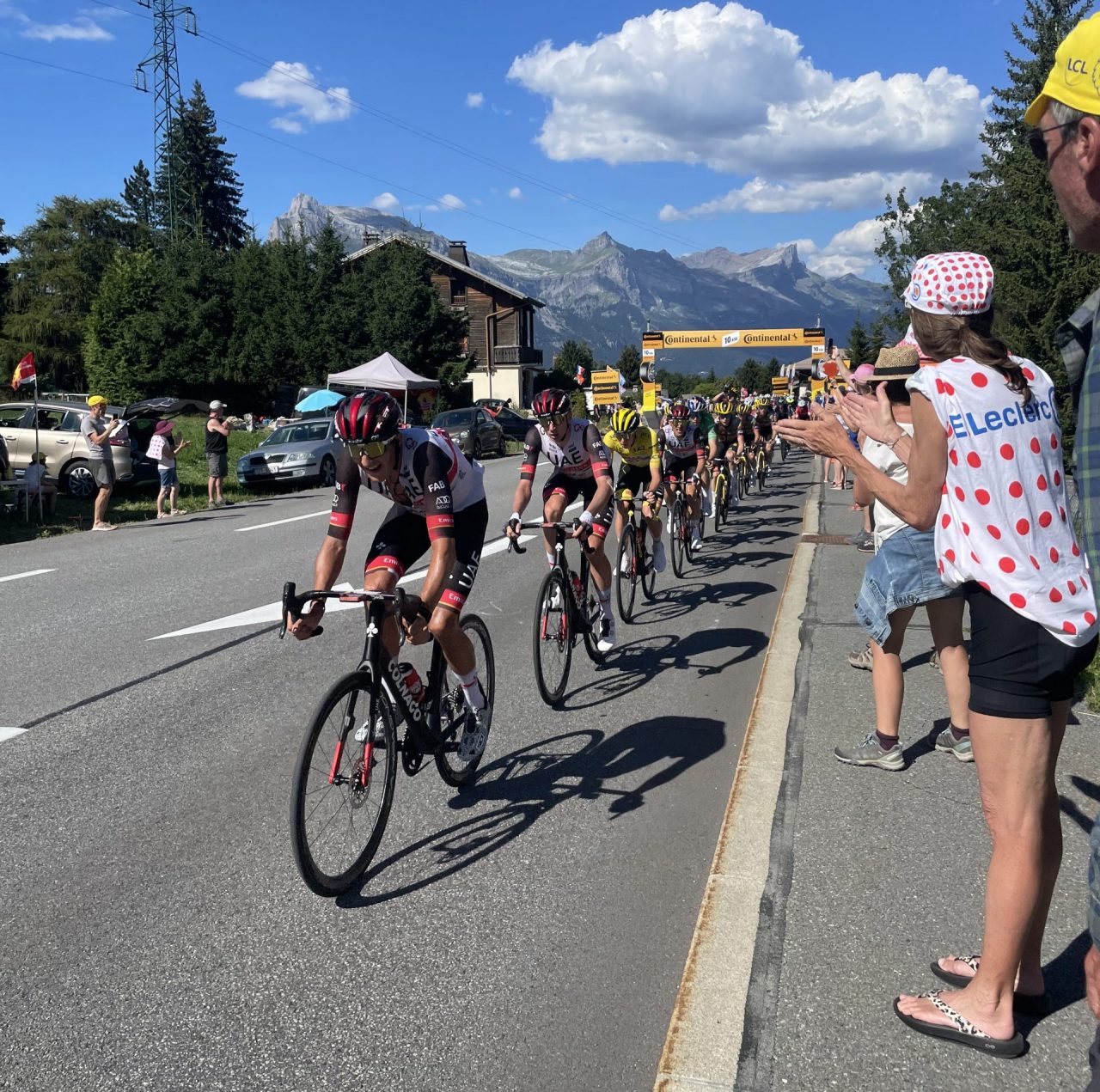
Consisting of 21 stages stretched over three weeks, bikers race a total distance of 3,328 kilometers (2,068 miles) with just two rest days. Though each stage varies in distance and elevation gain, even the ‘easiest’ of days look challenging on paper.
Sophie Stuber was on her own multi-day bike adventure with a friend, and planned a route overlap with the Tour in a few places. “It definitely gives you such an appreciation for what they do because our tour days were basically half or a third of the length of a stage and the [pros] climb up 11% grades literally twice as fast. And our days felt hard,” she added.
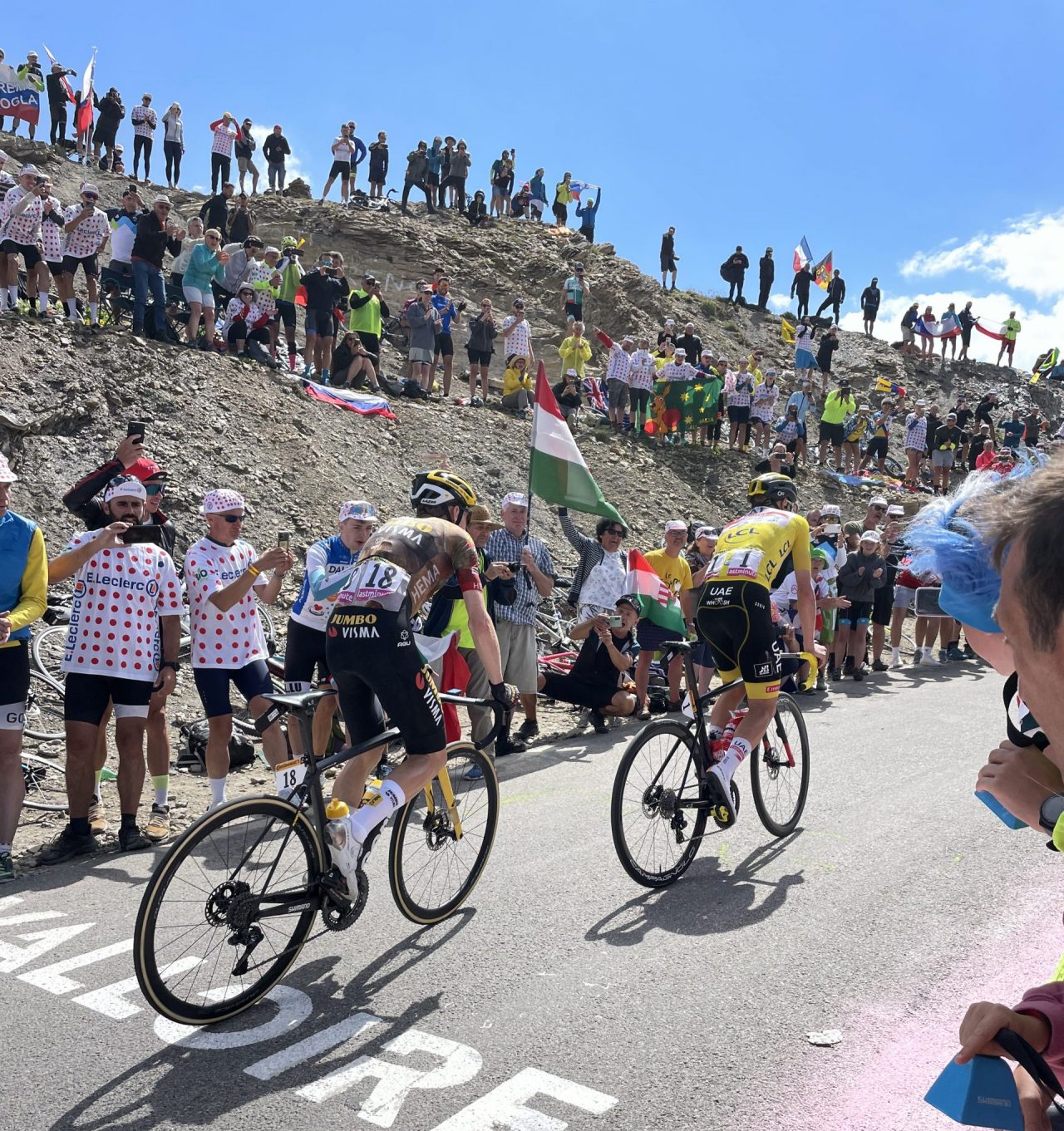
Aside from appreciating the overwhelming physical performances of the riders and the obvious excitement of watching the athletes ride by, spectating at the Tour is a fully immersive experience. As Gibson explained, “What you don’t see on TV is everything that happens before and after the riders pass through… The entire day is a party for everyone involved, whether they watch in town, or camp on the side of the mountain the previous night and picnic all day beforehand, or ride up the climb earlier in the day to find a spot to spectate.”
Gibson chose the latter option for Stage 11 (which turned out to be a pivotal race day as two-time Tour winner Tadej Pogačar from Slovenia lost nearly three minutes to his rival Jonas Vingegaard of Denmark who currently wears the yellow jersey). The portion of the stage that Gibson rode included 30 miles and 7,700 feet of climbing from Saint Jean de Marienne to the summit of the Col du Galibier. Gibson said, “although this segment was just the middle section of the stage for the pros, this was amongst the most challenging rides of my life, and unquestionably the most fun.”
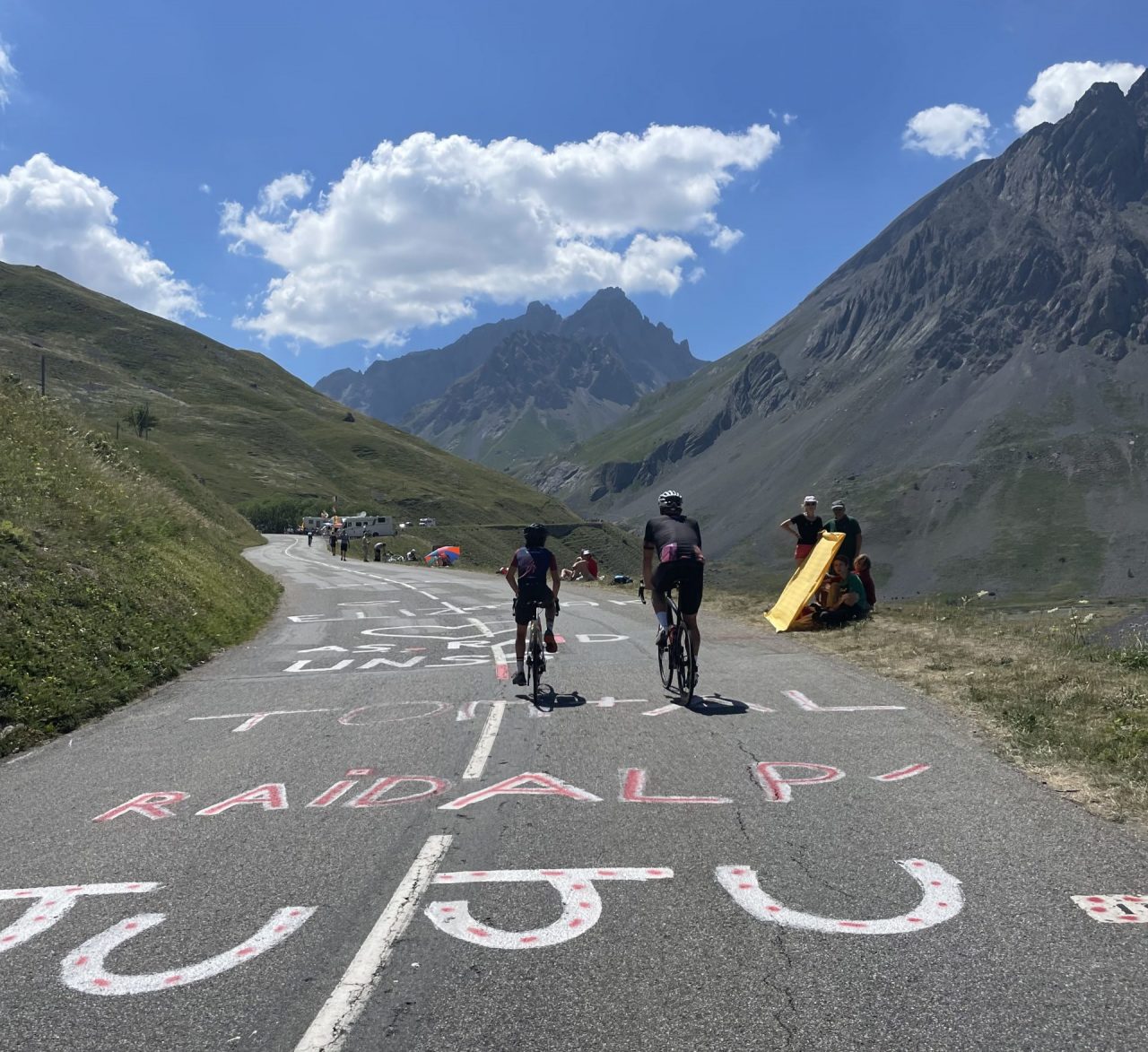
The racers aren’t the only ones getting encouragement from the crowds, Gibson said, “I even got small tastes of what it must be like to be in competition, as some of the crowd hollered ‘allez’ or ‘femme’ or ‘bravo’ as I laboriously pedaled onward. People waved flags for me and made tunnels. The energy was infectious, and by the time I reached the top and gently laid my bike down on the rocks, exhausted and exhilarated, I was doing the same for the other random people reaching the summit.”
Waiting for the riders to arrive, Gibson talked to fellow fans from all over the world. With no cell service available, anticipation was high to see how the race was unfolding. Gibson said, “It turned out to be a very exciting stage, with small groups of riders separated by several minutes. People (including me) went absolutely berserk watching the race unfold before their eyes. A few of my idols rode through, crusted in salt from the afternoon heat. Seeing them do their thing in person was legendary!”
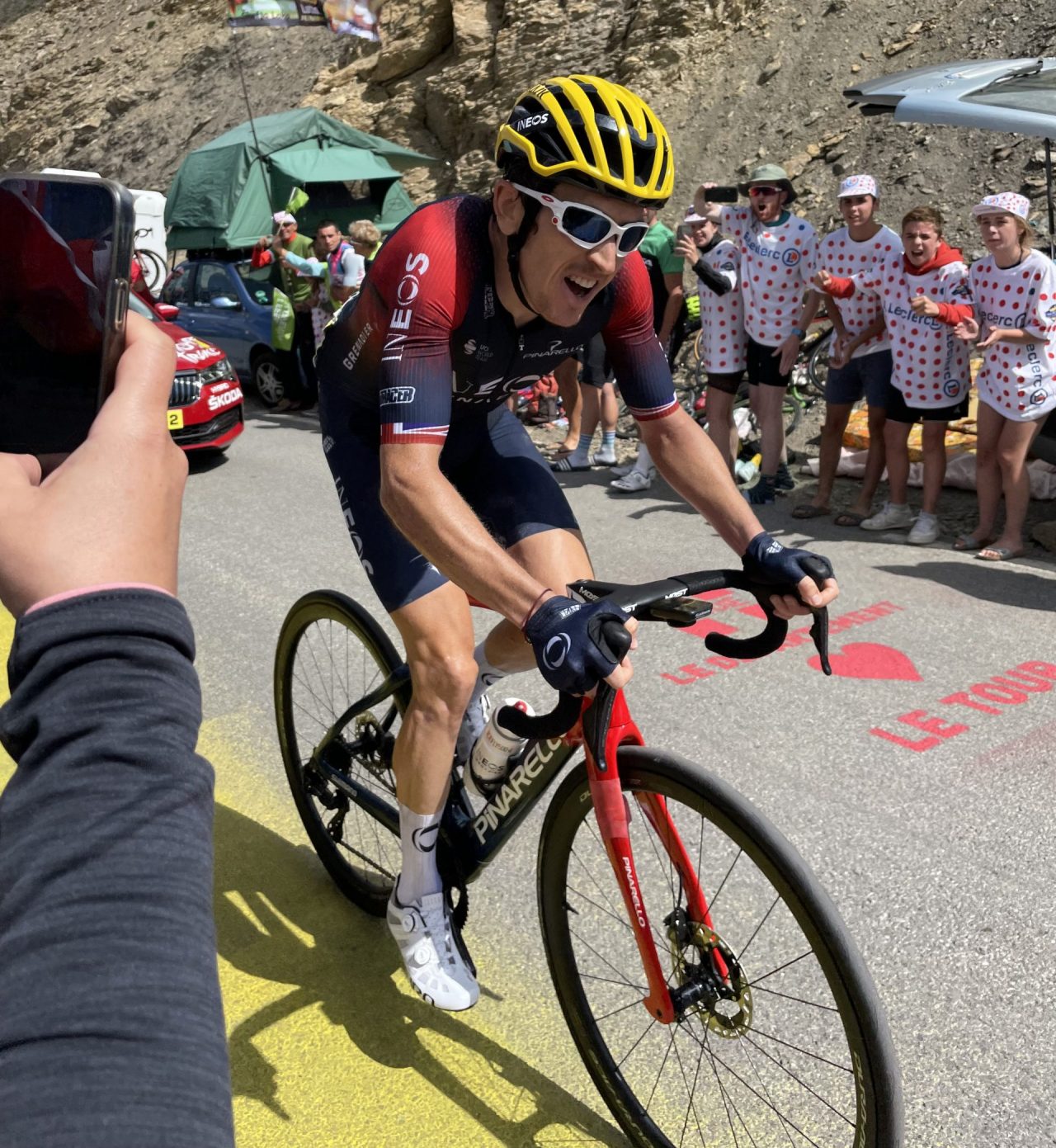
With the racers through, the crowds also had to make their descent, which Gibson described as “epic.” She said, “I assumed a position in what was essentially a civilian peloton, ripping down turn after turn. Returning to Valloire at the base of the climb, I came across a big screen broadcasting the end of the stage in the cobbled center plaza. The pace was packed and the party went on.”
Though she only watched three of the twenty-one stages, Gibson said, “I can imagine the party goes on in this same manner for the whole three weeks of the Tour. It is a production. And seriously one of the coolest things I’ve ever seen.”
After such a testimony, I’m ready to add in-person Tour de France viewing to my bucket list. For the time being however, the screen experience will have to suffice.
With 76 hours, 33 minutes and 57 seconds on the cumulative race clock for leader Jonas Vingegaard, only one stage remains before the 2022 Tour de France comes to an end- on the Champs Élysées in Paris on Sunday. Lucky for me, the race watching opportunities don’t end there as the first edition of the Tour de France Femmes kicks off the same day.
Ella Hall
Growing up in Washington’s Methow Valley, Ella was immersed in skiing and the ski community from a young age. From early days bundled in the pulk, to learning to ski as soon as she could walk, to junior racing, a few seasons of collegiate racing, and then to coaching, she has experienced the ski world in many forms. Now, as a recent graduate from Dartmouth College, she finds herself living in France splitting her time between teaching English at a university in Lyon, avidly following ski racing (and now writing about it!) and adventuring in the outdoors as often as possible.



